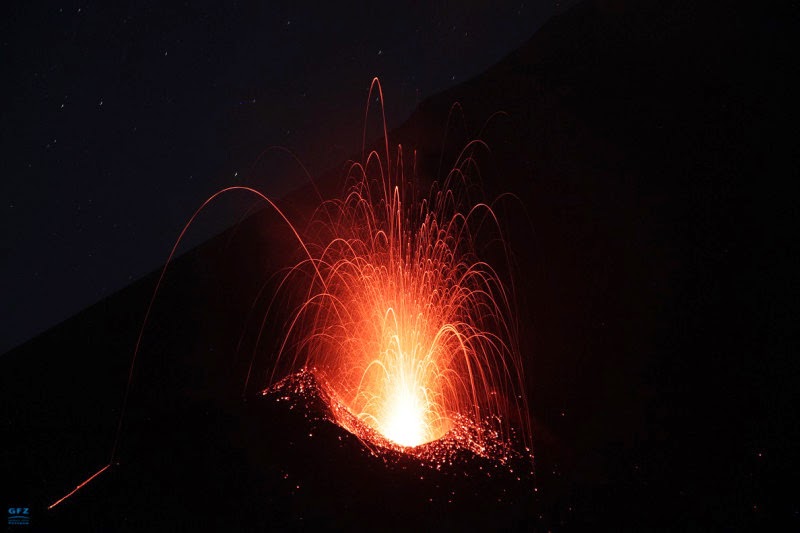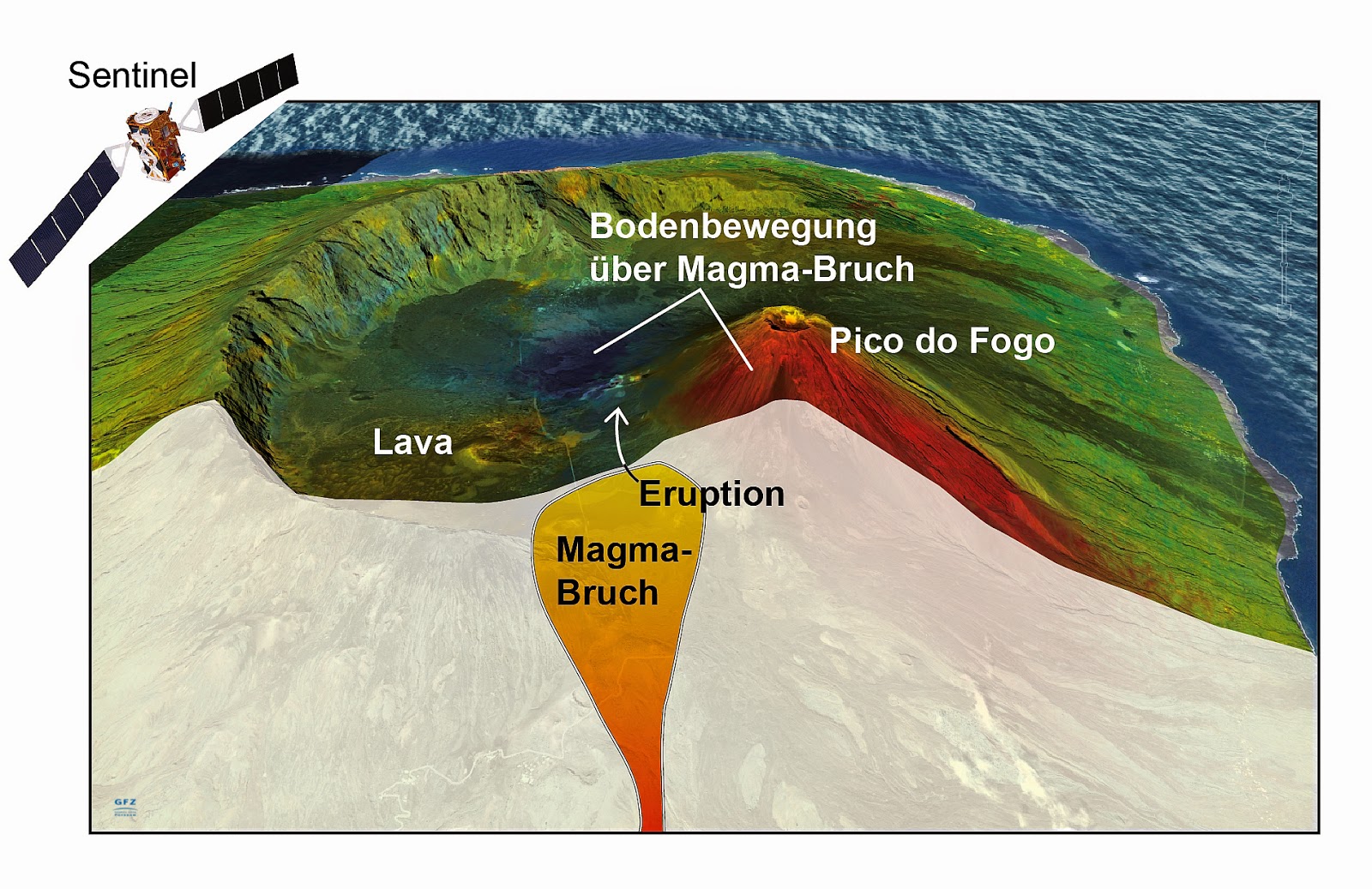
A new volcanic eruption commenced on Fogo, one of the Cape Verde Islands, on November 23rd, 2014. This eruption continues to date, and is considered to be the largest eruption by volume, and in terms of damage, on the archipelago for over 60 years. Most damage was caused by lava flows advancing into populated regions, so that numerous buildings, homes and roads were destroyed. In total, three villages have been abandoned and thousands of residents have had to be evacuated.
A team from the GFZ German Research Centre for Geosciences is currently conducting research to support local partners and to better assess the evolution of the eruption and associated hazards. Stimulated by a contact point for the European CECIS (Common Emergency Communication and Information System), the GFZ has started to observe the volcano eruption and to provide support on data acquisition and interpretation. “Our team, the GFZ Hazard and Risk Team HART, works in close collaboration with the University of Cape Verde, the Volcano Observatory of the Canary Islands, and the German Aerospace Centre,” says GFZ-volcanologist Dr. Thomas Walter. “On one hand, we are analysing data from the newest remote sensing satellites to develop models of the magma ascent path. On the other, we are collecting data on the lava flows directly in the field by installing volcano monitoring instruments.”

The satellite data, which is acquired by the European Space Agency’s Sentinel-1 satellite, enables the measurement of ground movements associated with the volcano eruption. The GFZ scientists have succeeded in locating and following the path of the magma from depth to its point of eruption. As a result, the location of the ascent paths at depth explains well why the eruption site is off-centered with respect to the volcano summit. The Sentinel-1 satellite acquires new imagery about once per week, which allows for regular updates on the ground movement and the magma ascent path beneath.
This remote sensing data is complemented by an expedition team that is making different types of measurements. Infrared recordings allow for monitoring temperature changes. A laser scanner, in addition, provides topographic measurements at millions of points. GFZ scientist Walter explains: “This data allows us to quantify the erupted lava volumes and also to better assess the hazard associated with lava flows to come.” The remaining duration of the eruption is not known. The magma’s eruption rate has decreased, but concerns have arisen about a recent increase of the explosive character of the eruption and related ash dispersion. These developments are currently being investigated, although they mean that an all-too-close approach to the eruption site remains dangerous.
Note : The above story is based on materials provided by Helmholtz Centre Potsdam – GFZ German Research Centre for Geosciences.









